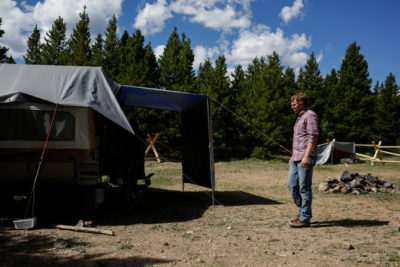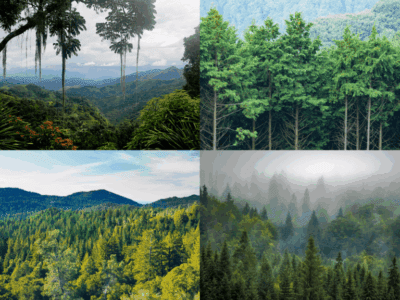Major Challenges Face the National Park Service in Its Next Century
Park Overcrowding, Crumbling Infrastructure, Changing Constituency Top the List
(This is the third in a series of posts this week commemorating the 100th anniversary of the creation of the National Park Service.)
To be sure, the National Park Service has much to celebrate as it observes its 100th birthday. The Park Service oversees a stunning and diverse set of national parks, monuments, historic and cultural sites that are the envy of other nations and people around the world.
But the Service confronts a wide array of challenges as it begins its second century. Some of those have existed since the Service’s inception in 1916 and, indeed, as early as 1872, when Yellowstone was established as America’s (and the world’s) first national park. Other Park Service crises are of more recent vintage. Here are some of the most pressing challenges:
Overcrowding in the National Parks
English writer Rudyard Kipling toured Yellowstone in 1889, only a few years after the park’s creation. He hated it: “Today I am in Yellowstone Park, and I wish I were dead.” The subject of Kipling’s ire was the “howling crowd” of other tourists he encountered there. Kipling’s displeasure is partially explained by the fact that, like the other 19th century park visitors who offended him, Kipling rarely ventured from the main roads and heavily-publicized attractions such as Old Faithful. Had he explored Yellowstone’s backcountry, Kipling might have formed a decidedly different opinion of the park.

Overcrowding of the Service’s most popular national parks–like Yosemite, the Grand Canyon, Yellowstone and Great Smoky Mountains National Park–is thus by no means a modern phenomenon. But it’s nonetheless a very real and growing problem. In 2015, more than 307 million people visited the national park system. And the popularity of the parks as tourist destinations varies wildly. Some national parks, monuments and historic site receive very few visitors, while others are swamped by prodigious numbers of tourists. Last year, for example, the Grand Canyon, Yosemite, Yellowstone and Rocky Mountain National Parks each attracted over 4 million visitors. The Park Service reports that Great Smoky Mountains National Park–America’s most visited national park–had an astounding 10.7 million “recreational visits” in 2015.
At such visitor levels, the wilderness experience can all but disappear. Park visitors in these daunting numbers inevitably tax park infrastructure, trample often-fragile flora and disrupt park wildlife resources.
Just about everyone agrees that these huge park crowds need to be better managed, but the question is: how? Park officials are understandably loathe to impose hard caps on the number of park visitors, recognizing that such a step would likely be enormously unpopular and threaten to undermine the enormous good will most Americans and foreign visitors alike hold for the Park Service. But more modest Service efforts at crowd management, like providing park-run shuttle vehicles and limiting the number of park campsites, are often merely bandaid solutions.
The likely answer lies in the fact that each national park system asset is different, and the Park Service will likely have to fashion individualized, park-by-park solutions to overcrowding if we are to avoid “loving our parks to death” in the future.
Crumbling Infrastructure
Related to the overcrowding problem is the fact that much of the visitor-serving infrastructure in the national park system is in an alarming state of disrepair. One recent study pegs the Park Service maintenance backlog at approximately $12 billion.
The volume of park visitors is part of the reason for the infrastructure crisis, but certainly not the only one. Weather conditions in many of America’s Park Service holdings are quite harsh, and deteriorating infrastructure is often a fact of life the Park Service must confront, irrespective of visitor levels.

The fact remains that committing the considerable funding necessary to address the national park system infrastructure is neither sexy or politically popular. Members of Congress, like Park Service officials themselves, generally prefer to devote scarce federal funds to acquisition of new national parks, monuments and historical sites, rather than committing those funds to repair infrastructure in existing park holdings.
In recent years, one partial solution has been the advent of nonprofit organizations–such as the National Park Foundation and the Yosemite Conservancy–and other groups that develop an affinity for national parks and are willing to partner with the National Park Service to fund, manage and improve them. These groups have been quite effective in raising funds to help manage and repair existing parks. They also provide members who are able and willing to perform certain modest infrastructure repairs (such as restoring park hiking trails). And organization members can also augment Park Service staffing, such as by serving as park docents, thus freeing up finite Park Service funds to devote to needed infrastructure repairs.
But a comprehensive solution to the crisis of deteriorating national park infrastructure will not be found until our political leaders come to realize the critical importance of maintaining safe and secure infrastructure in the national park system–and make funding decisions accordingly.
Making Our National Park Resources Accessible and Attractive to All
For most of the 100-year history of the national park system, its most ardent users and advocates have been predominantly middle class and white. A major challenge for the Park Service in the coming decades will be how to make the national park system more relevant and attractive to racial and ethnic minorities, inner city populations, low income groups and the LGBT community.
Earlier this month, Greenwire published a thoughtful report by reporter Corbin Hiar on this subject. It noted that national demographics are steadily changing, and that the Park Service must recognize and accommodate those changes if the national park system is to remain relevant to new generations of Americans.
One useful reform is to better focus new park system acquisitions on the interests and histories of underserved communities and groups. President Obama, recognizing this need, recently declared national monuments Cesar Chavez’s last residence in Central California and the Stonewall National Monument in New York City.
Another useful step would be to make the men and women of the National Park Service more closely reflect the general American populations they serve. In recent decades, the Service has made admirable progress in recruiting women to the NPS, a profession that at one time was almost exclusively male. But approximately 80 percent of the current Park Service workforce is white. Many of those Service employees are now approaching retirement, so over the next few years the Park Service will have a golden opportunity to actively recruit a new generation of park rangers and other Service employees who look more like the diverse visiting public they serve. The Service shouldn’t fumble that opportunity.
Finally, surveys show that the vast majority of national park system visitors are from the middle class. The sad truth is that a disproportionate number of poor and disadvantaged Americans have never set foot in a national park, monument or historical site. The Park Service will need to do a better job of public education and outreach in the future to ensure that all Americans are exposed to the the wonders and splendor of the national park system.
The Outside World and Its Problems Are Increasingly Intruding Into Our Park System
Related to the problem of overcrowded national park resources is the fact that our national park system is not immune from the social problems that currently arise in American cities, suburbs and rural areas. Crime is a growing concern in our national parks, although fortunately most of it involves less serious criminal offenses. (Visitors to Yosemite National Park are often surprised to learn that the park has its own federal magistrate and courthouse to adjudicate the criminal offenses that occur there.)
One of the unfortunate consequences of this lawless trend is that modern Park Service rangers must not only be naturalists and tour guides, but also cops on patrol–with all the attendant risks and danger that entails. The expanding law enforcement component of rangers’ jobs requires different and additional training, and increases substantially the risks they face on duty. And it makes the already-modest salaries most Park Service rangers receive even more inadequate.
Earlier this week, the New York Times ran an article entitled, “Tensions Soar as Drifters Call National Parks Home.” That piece chronicles the growing trend of homeless people to take up unauthorized residence in the national parks. Many of these unfortunate folks suffer drug and alcohol addiction and mental health problems. Their homeless encampments often generate sanitation and sewage problems, disrupt park vegetation and animal populations, and can be the source of potentially-disastrous wildfires sparked by unattended campfires. National park officials also report an increased number of confrontations between homeless squatters and more conventional (and legal) park users. The risk of such confrontations places still greater pressure on park rangers to keep the peace and defuse those confrontations. How the Park Service resolves the homelessness problem, which often seems intractable even in urban settings, will be a daunting challenge for the NPS.

Decades from now, we may look back on the National Park Service’s first century as a relatively placid and uncomplicated era of national park system management–at least as compared to the many looming challenges the Service will confront in the coming decades.






Reader Comments